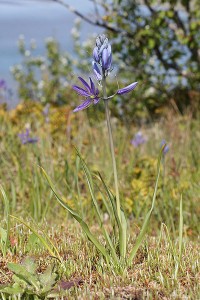by Woodsbum
I recently started using willow bark tea to help out with my constant ache and pains associated with the over abundance of injuries that I have sustained over the years. It doesn’t taste bad and when mixed with nettles and local honey, it is quite tasty.
The use of willow bark is not something that is new. Natives have used it for hundreds of years for pain relief. All you have to do is harvest the bark at the right time and then boil it up. Willow can be either ingested as a tea or turned into a tincture, so that is another option if you so choose. I have never used the tincture because the tea is perfectly fine with me.
Of the whole process, it is always the harvesting of the medicine that seems to be the rub. What you are looking for is the live, bendy twigs at the end of branches or year old saplings. Either way you want to gather it in spring when the twigs turn to a bright color and start to bud new leaves. Once you identify and harvest your willow bark, just take a vegetable peeler and strip off the bark. Don’t get any of the pith or your tea will taste funny. Also try to keep the buds out of your harvest.
Once you have your bark stripped, dry the bits out on a plate or bowl. I built a drying rack out of screen so that whatever I am drying does so more evenly. If you do use a plate or bowl just make sure that you turn it every so often to keep the bark from trapping moisture between the bark and the plate.
If you are having issues finding willow just take a trip down to your nearest river or stream. Here in the PNW, there tends to be a plethora of willow somewhere along every year round waterway. It won’t take too much of a hike to find. Worst case take a trip to Sauvie Island or walk along the Lewis River for a bit. When you get to the point where the brush and trees are too thick to navigate there is a high probably that willow is what has stopped your forward progress.
When you get ready to make your tea, I am much less than scientific. What I do is take what I can pinch between my thumb, fore and middle fingers and then toss it into a tea pot. After it whistles at me I remove it from heat and put in some local honey and let it sit for about 10 – 15 minutes. This allows the bark to completely soak and it seems to bring out the best flavor for the tea.
Now is time for the science of what willow bark does for you: From my research willow has a varying amount of salicin, which is an active pain reliever that is similar to aspirin. If you ingest too much salicin, it can do harm and even cause Reyes syndrome in much the same way that aspirin can.








